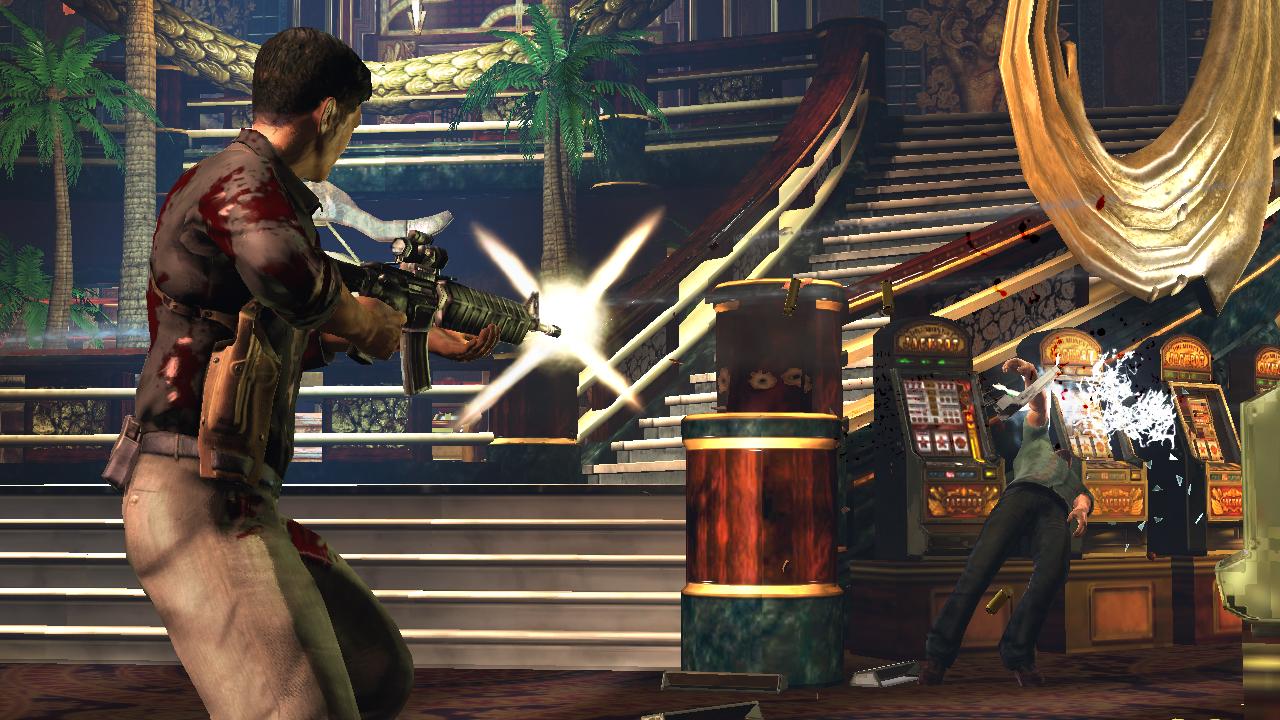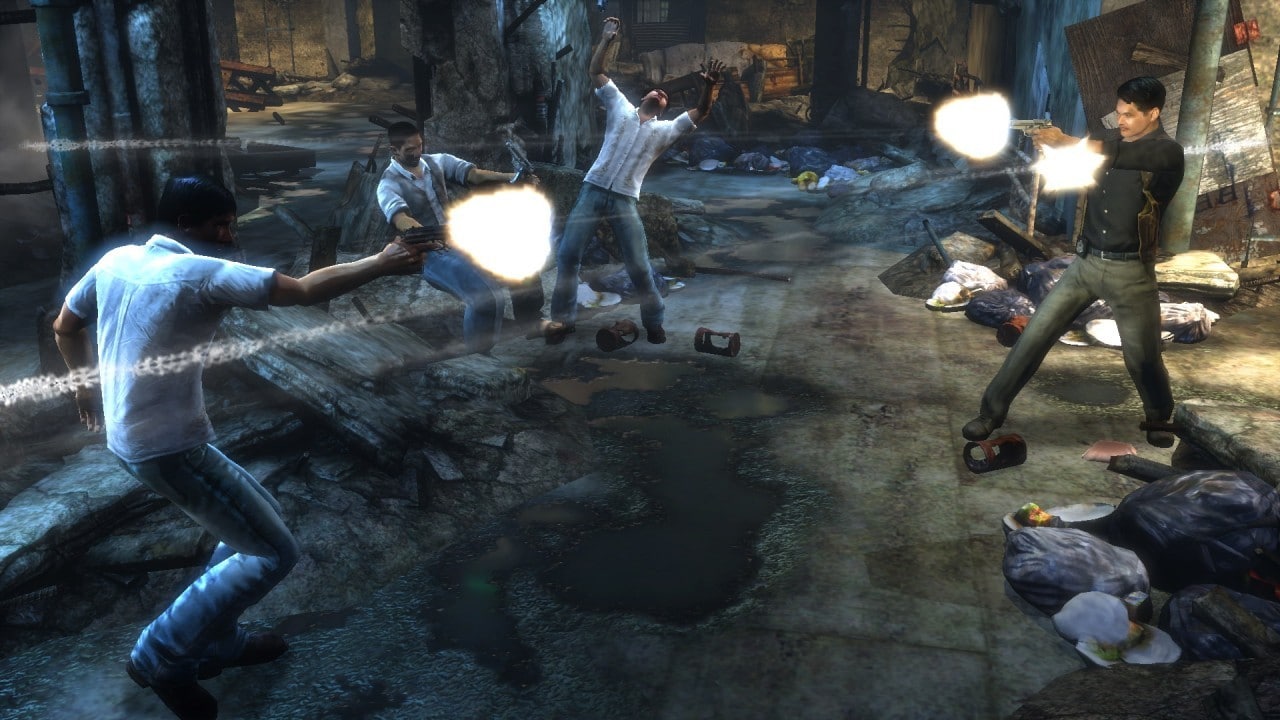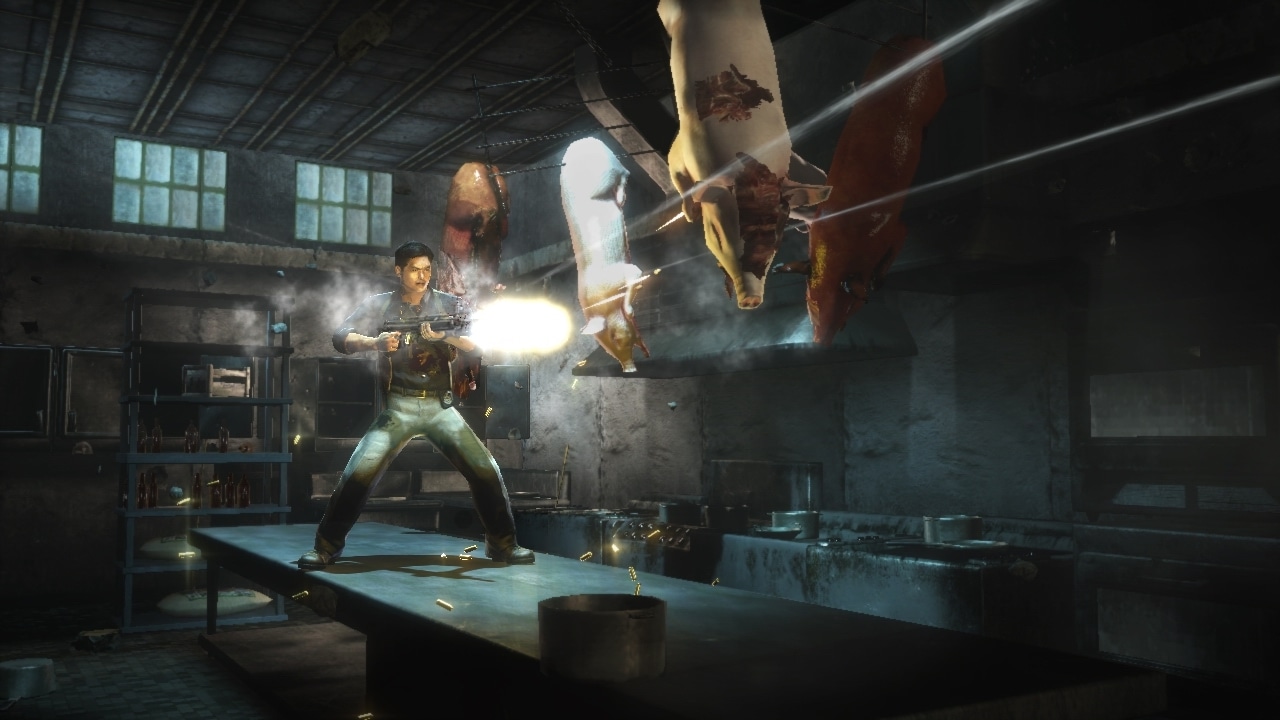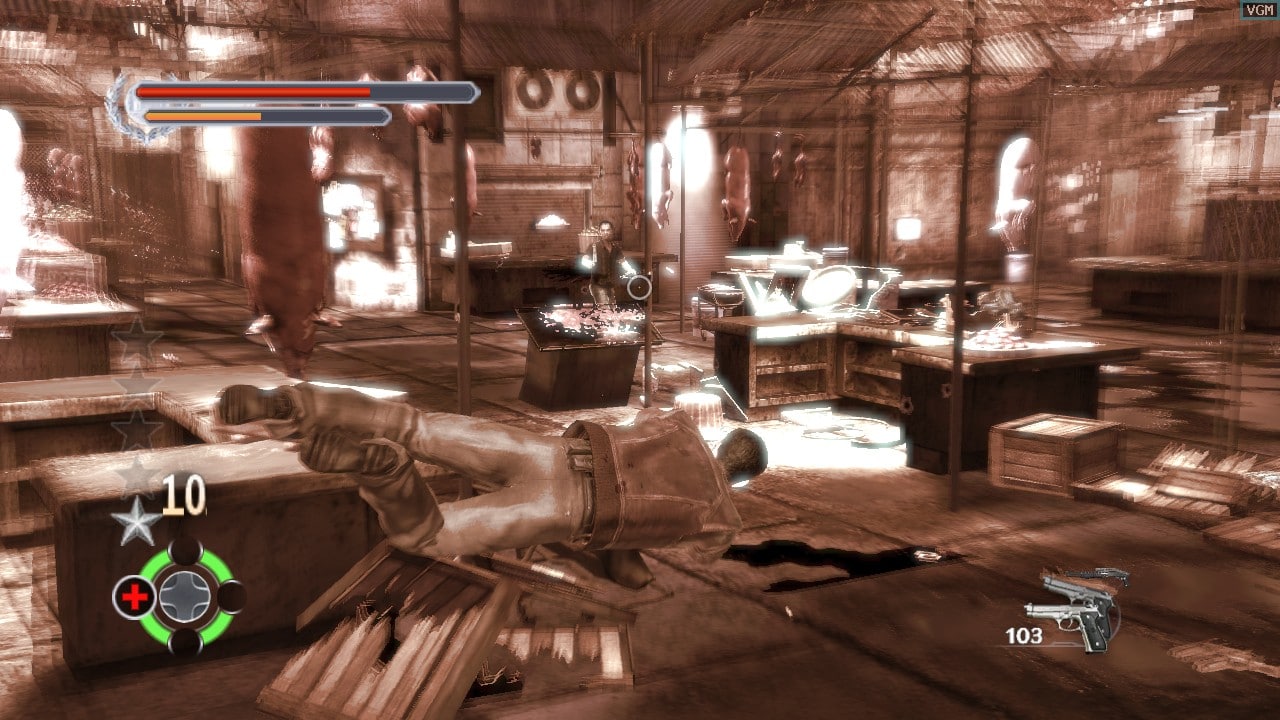Brian Eddy had set his sights on making games early. “I started when I was about 12 years old on Commodore VIC-20,” he says. “I wrote some games and some applications and sold them to magazines and things like that.”
Years later, a 21 year old Eddy on holiday in Chicago saw a newspaper ad that read “GAMES, GAMES, GAMES!”. He remembers thinking: “‘Well, that sounds great. That's exactly what I want to do.”
Chance met preparation. Eddy answered the ad and landed a dream job at a pinball powerhouse Williams (today operating as WMS Industries), which had recently acquired a video game subsidiary in Midway Games. But it would be almost a decade before Eddy would start making video games.
Eddy entered the workforce having no idea that the 90s were destined to be a tumultuous time for the pinball industry. The decline of the video game arcade market marked pinball’s chance at a triumphant comeback. The first few years of that decade made a strong case that pinball might meet the challenge.
Table sales were soaring as new markets in Asia and Europe embraced pinball. Williams, now the biggest player in the business, rose to the occasion introducing a string of some of the most successful tables ever. Their table based on The Addams Family movie sold 20,270 units, setting a record that stands to this day and is unlikely to ever be broken. Eddy was right in the thick of it all, at first programming and then designing tables for the company. His input included tables based on movies like The Shadow, Indiana Jones and Johnny Mnemonic, but it was an original creation called Medieval Madness that gained him rock star status in the pinball world. A world that was about to end.

Released in 1997, Medieval Madness, often referred to as the best pinball table ever created, turned out to be the swansong of the pinball division at Williams and the industry at large. By the end of the decade the market had collapsed and, in 1999 Williams pulled the plug on its pinball operations. Eddy, however, was too valuable an asset to lose and was transferred to Midway Games, the conglomerate’s next big moneymaker thanks to hit series like Mortal Kombat and NBA Jam. There, yet again, he would find himself in the middle of a huge shift.
“I did a couple arcade games. I did Arctic Thunder, a big sit down arcade game. And then Midway decided to get out of the arcade business and start doing console games full time,” Eddy says.
The first console game he worked on was Psi-Ops: The Mindgate Conspiracy, a fun shooter mixing gunplay with psychic powers. The game failed to make the splash everyone at Midway hoped for, and instead of a sequel, the team moved into developing a brand new game. This time around, however, folks at Midway wanted to prop it up with a pre-existing license.
A member of the marketing team at Midway had a connection in the camp of the acclaimed Hong-Kong born moviemaker John Woo. That connection quickly grew into a back-and-forth about a possible collaboration, and soon enough the deal was struck for Midway to develop a game based on Woo’s breakthrough 1992 movie Hard Boiled starring Chow Yun-fat as Inspector Tequila Yuen.
“It was just a perfect combination and perfect timing,” Eddy says.
***
“He's not a game player by any means,” Eddy says of John Woo. He recalls one of the trips to California where the team showed Woo the game that, eventually, would become an official sequel to Hard Boiled. “One time we sat down and had him play it. It was obvious that John had never played a game of this type before. But he did try. He jumped in and played and looked around, and then we basically kind of took over and showed him all the different things we could do.”
Woo liked what he saw, and was all about giving the team freedom to do their job. “He was heavily involved but he was kind of looking over it to make sure that we were true to the theme and the character [of Tequila],” he says. Eddy remembers one instance of Woo using his executive power when it came to the story. “I think the original story had to do with the export of illegal body parts and that was a little bit too far for him, so he pulled it back a little bit.” When it came to what makes a video game a video game, however, Woo took the backseat and relied on Midway’s expertise. “We really did try to emulate his movie so we didn't get too much pushback on the gameplay.”
The biggest takeaway for Eddy from his time working alongside Woo was a chance to peek inside the filmmaker’s mind. Eddy talks about: (...) getting in his head and understanding what pieces he thought were important in setting up a scene. And while making a game isn't exactly the same as setting up a scene, you can still take those ideas and put them into the game.”

To understand Woo’s modus operandi even better, Eddy and the team dissected his movies along with a plethora of other action capers to come out of Asia. The team emerged from that viewing marathon with two priorities: making the movement in the game as smooth and responsive as possible, and to create a largely destructible environment. The idea was to replicate “the whole feel and the visceral nature of the gunfights and the slo-mo and everything flying in the air.” Neither of which came to Eddy and his team easily.
“In the movie, you can stage everything and plan it all out and then you're doing the shot,” Eddy says. These things, he notes, get much trickier when you add the freedom of movement to the equation. “To have a player go anywhere in these worlds and have that smooth experience, that was one of the more challenging things. We tried a number of different ways to do it. In the end I think we came close but I would have liked to have made it even smoother if we had more time.”
As anyone who rode a restaurant trolley down a corridor with guns blazing in Stranglehold can attest, Brian Eddy is being humble here. The game was as fluid and smooth as shooters came in 2007. But do take note of his remark about the time constraints, which we'll circle back to in a moment.
“We wanted everything to explode if it was shot,” Eddy explains the second priority. And they meant everything: walls, pillars, vases, bottles, chairs, tables, plates, cars, you name it. Think of an object that could potentially explode if it was shot, and the guys at Midway wanted to blow it up. Heck, they probably wanted to blow up some stuff that doesn’t explode in real life. They got close to that vision, considering the restrictions of consoles at the time. “It was definitely a stretch to try to get everything in the world to be dynamic, but I think we took it further than most other games did,” Eddy says.
Still, the flurry of debris that made Stranglehold that much closer to John Woo’s movies came at a price. The game Midway initially planned included driving and boating sequences which would have sprinkled some of that destruction-laden, slo-mo gun ballet over vehicular gameplay. That’s where the tight deadlines took the biggest bite out of Stranglehold. “We just didn't have enough time in the schedule to get all those pieces in,” Eddy says. Given the choice between destructible environments and frolicking in vehicles, the team decided the former was more crucial to nailing the essence of Hard Boiled. That’s by no means the end of the cuts the schedule dictated.
“It wasn't that long, and we would have loved to add more content to it,” Eddy says about Stranglehold’s single player campaign. The lackluster multiplayer portion of the game also suffered from lack of time. “Again, it came down to time and resources, but there were shades of some really cool things that could have happened in the multiplayer. We didn't have enough time to iterate it to a level that we we would have liked.” But then again, Eddy brings up what could be considered gaming’s take on Parkinson’s law:
“You know, I think everybody who makes a game of that scale always wants more time to refine it.”
All in all, despite the console limitations and time restrictions, Eddy remains rightly proud of his work on Stranglehold.
“There were definitely moments that make you feel like you're in John Woo movie. It doesn't happen in every scene or every place you go, but there are moments when you are diving across the table, taking out enemies in slow motion with everything blowing up around you. When those moments happen it feels amazing.”

Stranglehold released in late 2007 to warm critical reception and what we can assume were satisfactory sales that inspired talk of building a new multimedia franchise. First there were ambitious plans of reuniting John Woo and Chow-Yun Fat on set for a movie that would pick up where Stranglehold left off. “There was a lot of talk of it even during development,” Eddy recalls.
That movie wouldn't happen and, while Eddy doesn’t know what happened there in the dozen years since the announcement, he remembers a different idea for a film being floated. “At one time some of the people on Woo’s side were going to take all the cutscenes from the game and try to splice together a movie and submit it to short film festivals. It was an interesting concept.” Eddy is clear-eyed enough, however, to admit the idea of putting together a cohesive story out of only game cutscenes was probably doomed to fail.
Soon after the release of Stranglehold, rumors started circulating that Midway planned to follow the game up with a sequel. The gossip was partially true. Yes, Eddy and his team were working on a new game much in the vein of Stranglehold, but it was never meant to be a straightforward follow up. The game was called Gun Runner and according to Eddy “the core part of the game was being able to create your own very diverse style of weapons. We had some amazing prototypes like sticky guns that would shoot out sticky fluid. So it wasn't just different types of bullets. They were very different types of guns but still in that same realistic world setting.”
https://vimeo.com/46915215
“It led to some really fun player discovery as we were prototyping it,” Eddy remembers. “But unfortunately Midway went away before we could finish it.”
***
It was in late 2009, two years after the release of Stranglehold, that the financial troubles plaguing Midway for a while finally caught up with the company. Eddy was once again in the middle of the action as Midway collapsed around him.
“I think the whole industry at the point was going through a lot of changes and transitions. There were companies spending 50 to 100 million dollars to create games, and all of the people spending 10, 20 even 30 million dollars were having a really hard time competing. Midway was certainly in that boat. We weren't spending a hundred million on a game like Grand Theft Auto."
But that, of course, is just one part of a much bigger picture that included dwindling sales, a dip in the quality of Midway’s games portfolio, aggressive business tactics leading to huge amounts of corporate debt and a whole plethora of bad calls on management’s part. The fortunes of Midway mirror any number of similar scenarios in the industry that was suddenly shifting away from licensed games in late 2000s.
That shift was partly fueled by a failure to capitalize on involvement of big Hollywood directors in game development. Big shot filmmakers like Steven Spielberg, Guillermo Del Toro, Gore Verbinski and a whole bunch of others tried their luck in making games with, generally, not much to show for it. Stranglehold remains one of the very few games (along with Spielberg’s excellent Boom Blox) to see release. I asked Eddy for his take on this.
“I think people coming from film have a different view of what a game is and they tend to have more grandiose visions than what the hardware and the technology could provide at the time. So I think it was all well meaning. They wanted to create this unique, cool experience that nobody has seen before but the technology wasn't there to quite do it yet.”

“The other side of course is most of them aren't gamers. So they don’t understand what is possible in a game. They don't have that history of longtime game playing that can be a plus and a minus,” he says. “Sometimes you get some really unique ideas and perspective from people who are bringing what they know into your world. But if they don't know enough it can also kind of be a mess of just meandering around and trying to find what's in their head.”
How does that compare to his experience working with Woo?
“I think that one thing that worked on that project was that he knew that we were the game makers. We were the ones who had the craft to create this experience. His eye was on story, visuals, cinematics, locations and that’s where where his expertise really helped us.”
With expertise of his own, Eddy charted a new course for himself after Midway shut down. Together with a bunch of friends he put together a startup with the idea of making social games in the vein of Farmville. “That was the market at the time,” Eddy says. “It was bringing in a whole new audience of players, which was cool.”
Not shockingly, the team was really good at making their games and quickly found success. One issue: they had no idea how to properly capitalize on it.
“We had all the right systems, we had all the data coming in,” Eddy says. “We just didn't know what to do with the data. We didn't know how to interpret it and understand it. So we had some troubles there, and what we really needed was to get in with somebody who knows that stuff.”
They found that somebody in Zynga, the social gaming behemoth of that bygone era, which bought the studio. Eddy stayed with the company for three years or so, before returning to his industry roots at Stern Pinball to contribute to yet another resurgence of pinball.
“I'm kind of coming back to what I had done 20 years ago, which is a really fun experience. It's been an awesome career because I got to do pinball, which has a very mechanical, visceral feel to it and then move over to video games with the endless opportunities for what you could create on the screen and not being limited by the physicality of pinball.”
Which does he prefer?
“I like all types of games. Pinball, video, board games. It doesn't matter to me,” he says. “I love games.”

